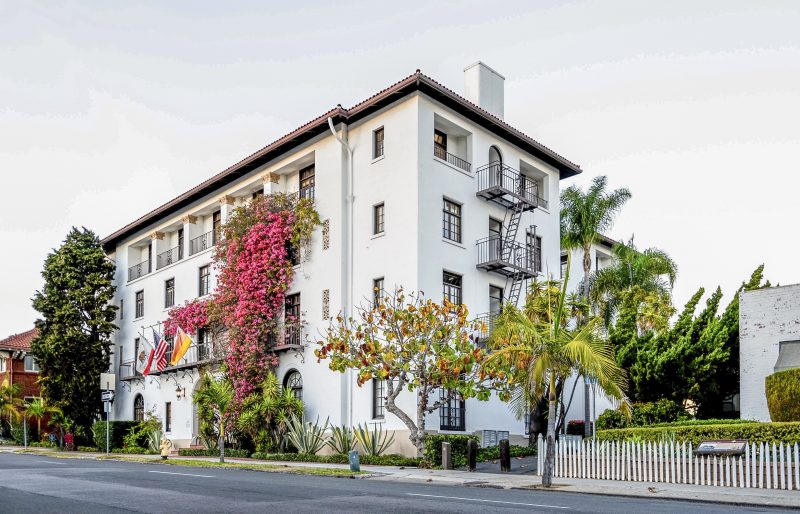
Following a lull in the first quarter, commercial sales transactions accelerated somewhat in Q2, while dollar volume got a boost from a few high-value investment sales. Overall, the market is still in recovery mode. At midyear, transactions and dollar volume were down 8% and 12%, respectively, compared to pre-COVID 5-year averages.
[This is an excerpt of the full midyear market report, which is available here.]
Investor activity has picked up, but has not recovered to the levels seen pre-pandemic. Some demand previously centered on commercial property appears to have migrated to apartments and other residential investments, which are widely assumed to offer more reliable income in the near term compared to office and retail property. Still, acquisitions by investors continued to represent the large majority (84%) of dollar volume to date. The Lobero Office Building at 924 Anacapa St in Santa Barbara was recently purchased by a local investor for $16.5 million, and a three-building retail/industrial portfolio in the Funk Zone traded for $10.3 million after attracting multiple offers. In Goleta, Majestic Asset Management acquired the 66,384 sf office/R&D campus at 110-150 Castilian Dr in an off-market transaction for $16.1 million. Looking ahead to Q3, a few notable investment sales are already in progress, including the former Nordstrom building at Paseo Nuevo, expected to close escrow by August.
Owner-users were nearly absent in Q1 but re-engaged in Q2, completing 12 sales as the economic outlook for local businesses continued to improve. Two owner-user purchases in Santa Barbara were the Oreana Winery building at 205 Anacapa St in the Funk Zone for $4.2 million, and the Tienda Ho building at 1105 State St for $2.5 million. The pandemic has disrupted revenue streams for most local businesses and made the idea of buying a building seem like too much to take on, but as the economy recovers, potential owner-users will have an easier time obtaining financing, particularly SBA loans. For those with the means to buy, there are abundant opportunities—both on- and off-market—in the current market.
Retail inventory is at a historical peak of 33 properties available, including seven on the downtown State Street corridor. Concerns about the future of brick-and-mortar retail, combined with curtailed consumer behavior during the pandemic, have induced more retail owners to market their properties for sale. Retail sales increased in recent months, producing 8 transactions in Q2. Most notably, a local investor purchased the multi-story former Sur La Table building at 821 State St for $4.6 million.
As with retail, there is more hospitality property on the market than usual. There are 5 offerings for sale in Santa Barbara, including the Hotel Santa Barbara at 533 State St listed for $49 million and the Franciscan Inn at 109 Bath St offered for $21.7 million. No hotel properties have traded hands to date this year.
Following the explosive latter half of 2020, sales of office property have been relatively modest to date in 2021, as both transactions and dollar volume are trending well below pre-pandemic levels. There hasn’t been an appreciable increase in office inventory, however. The largest office sales were the Q2 acquisitions of 924 Anacapa St and 110-150 Castilian Dr (mentioned above). For industrial property, there have been 6 sales to date, all in Santa Barbara. Most of the action happened in Q2, including the $8.7 million purchase of 4171-4183 State St in by an investor.
We expect the second half of the year to bring continued growth in sales activity, provided emerging coronavirus variants don’t place too much drag on the economy. There is an unprecedented inventory of 82 properties on the market, and both owner-user and investor demand appears to be growing to address that supply. In addition, with residential investments becoming relatively expensive, some investors will likely shift their focus back to commercial property, especially for those willing to accept some near-term uncertainty in their risk analysis. Competition has compressed cap rates for apartment and industrial investments, but pricing on office and retail property generally leaves more room for play on the risk/reward spectrum.
